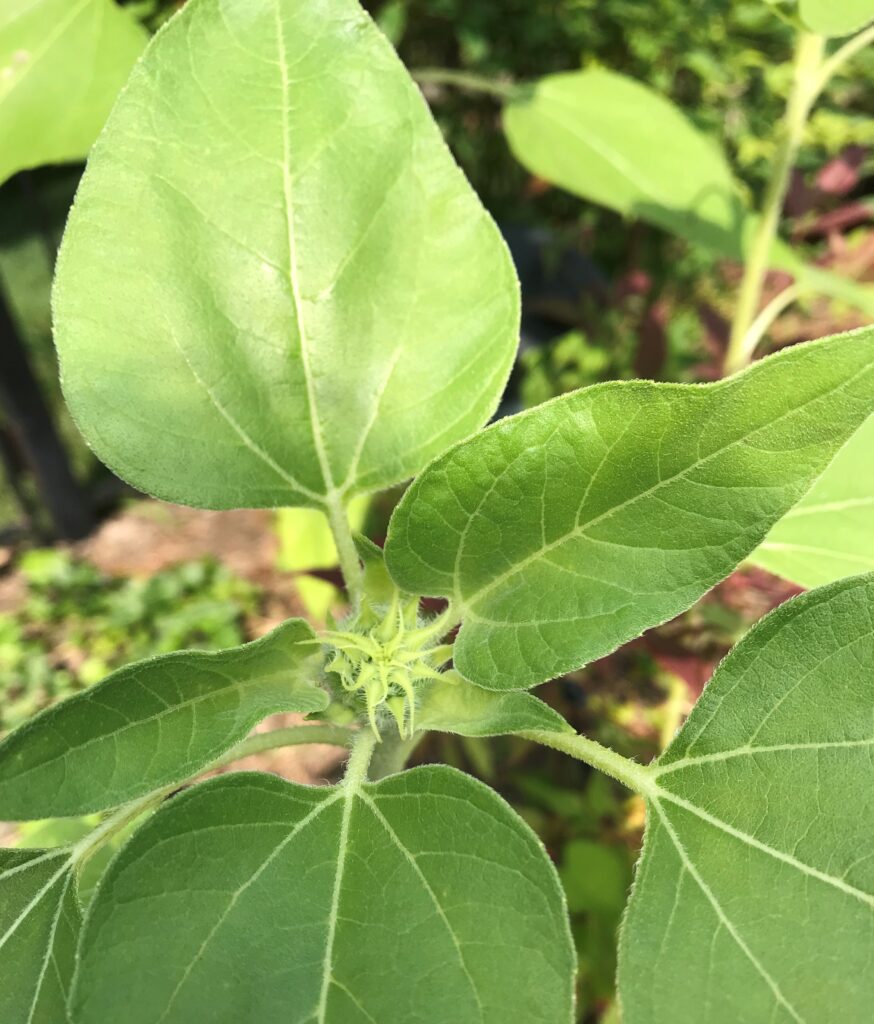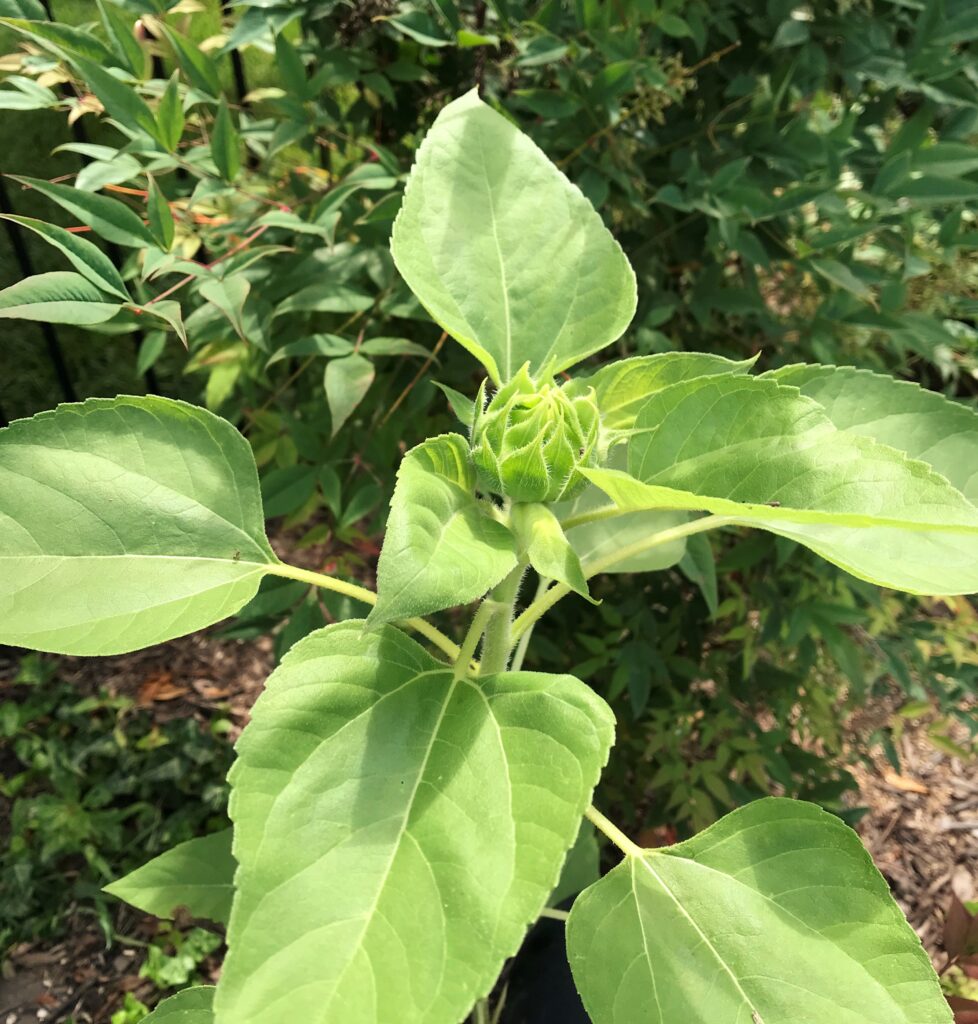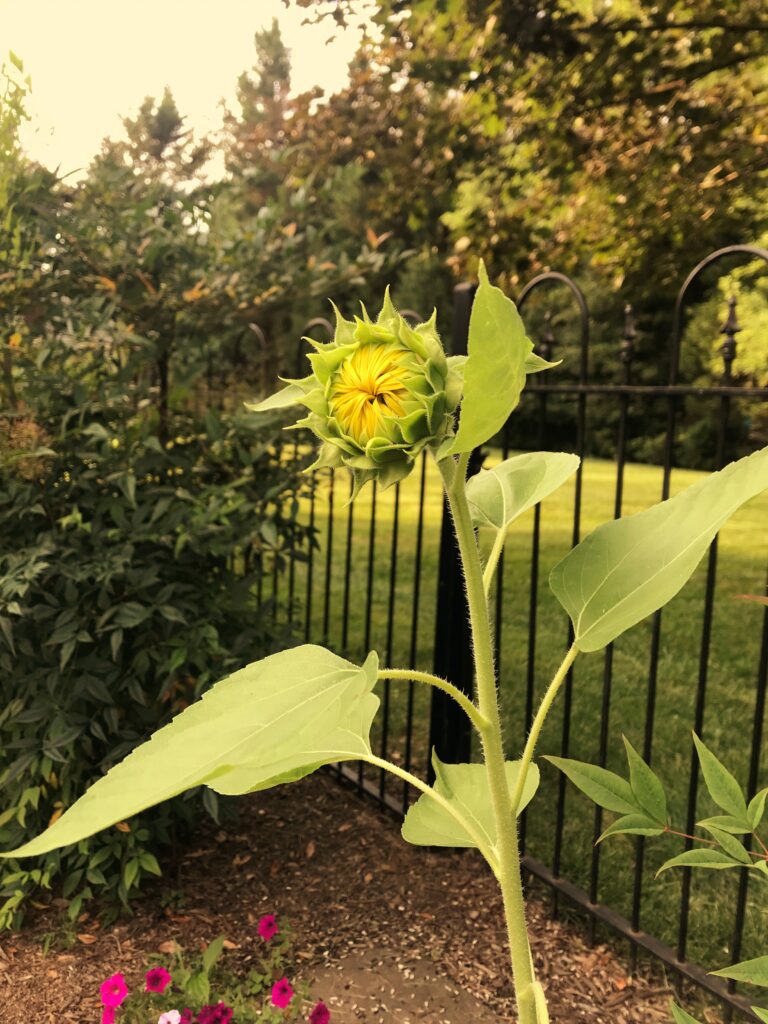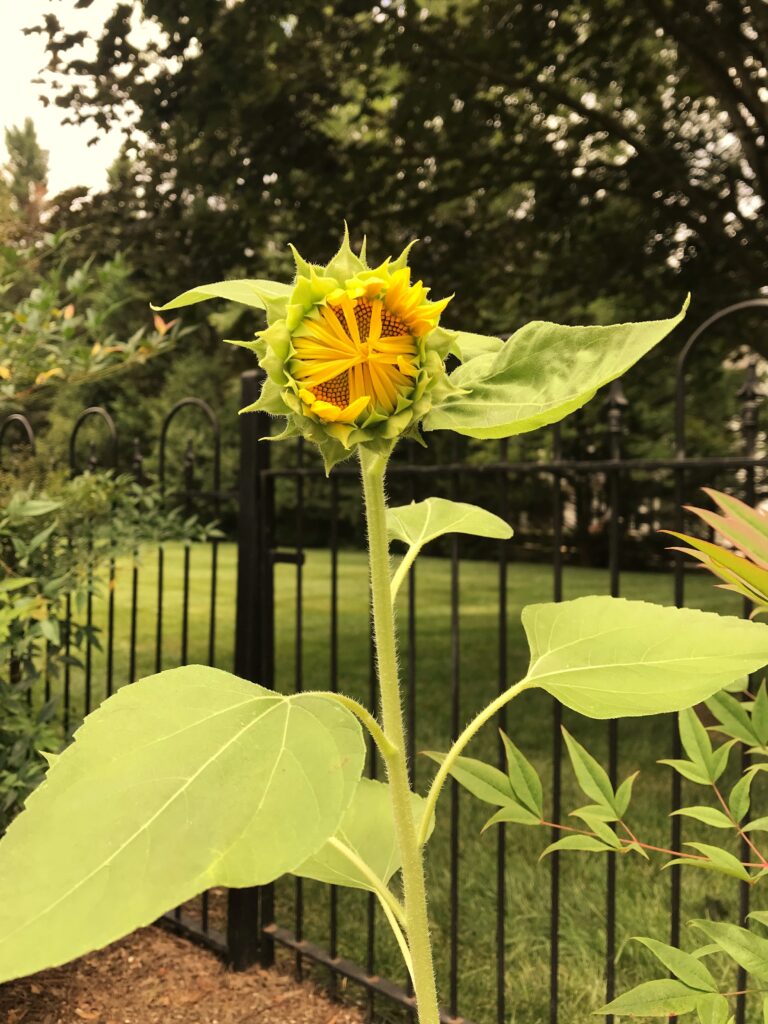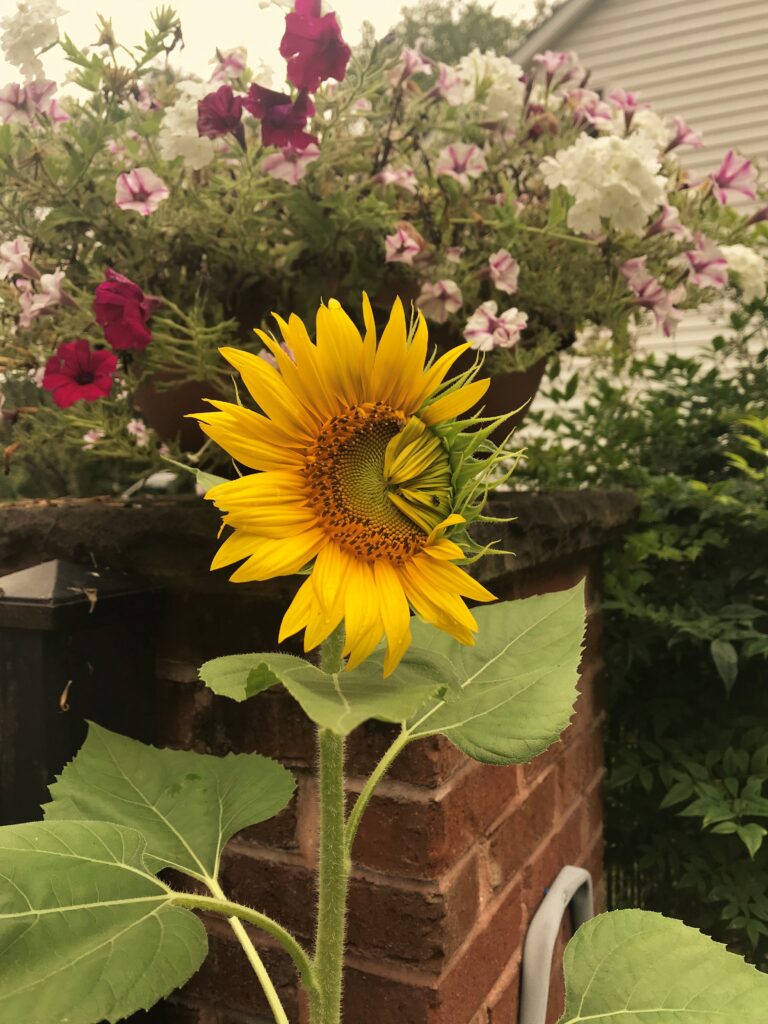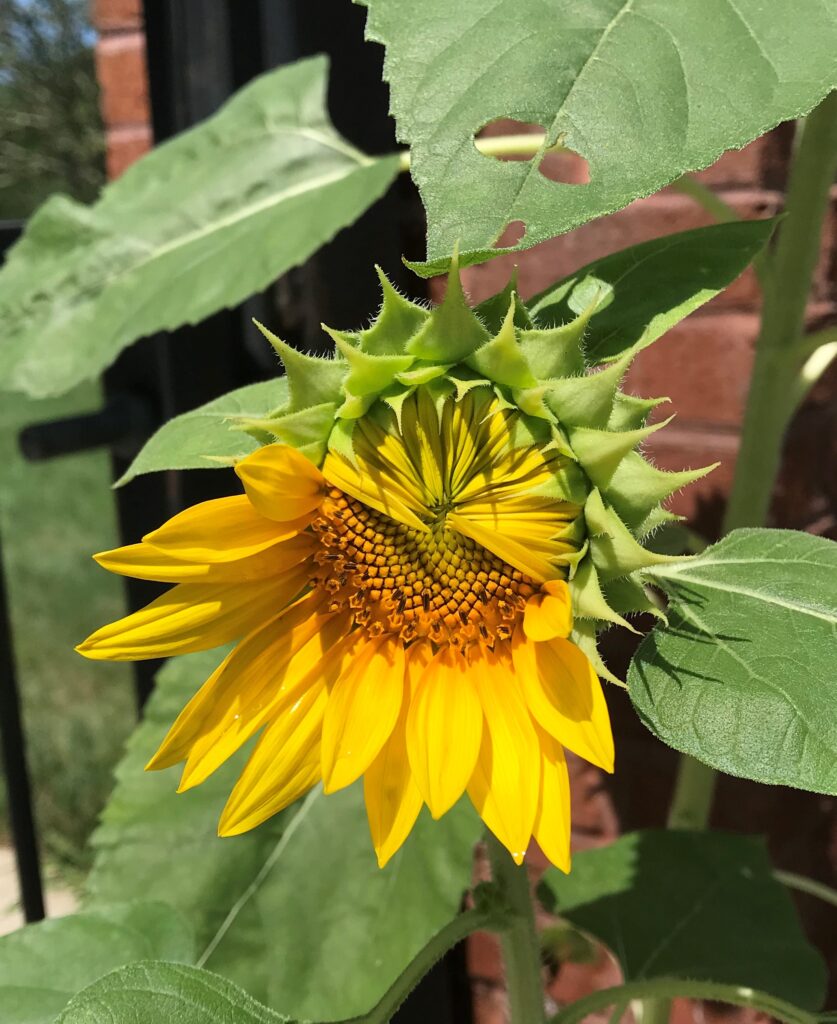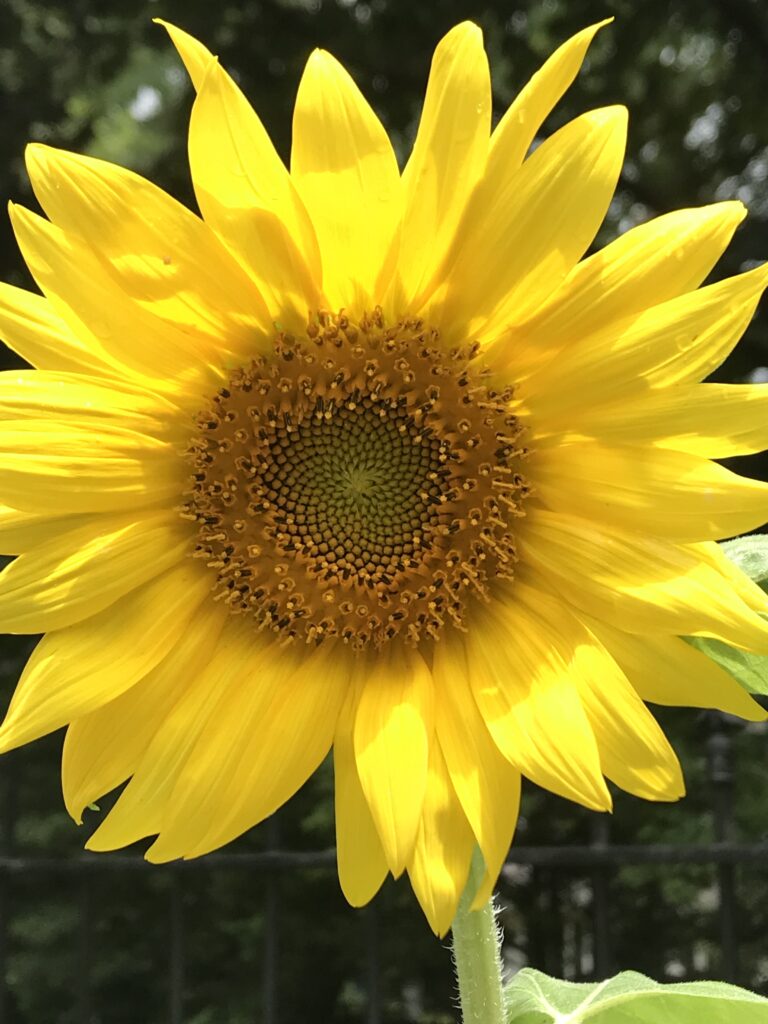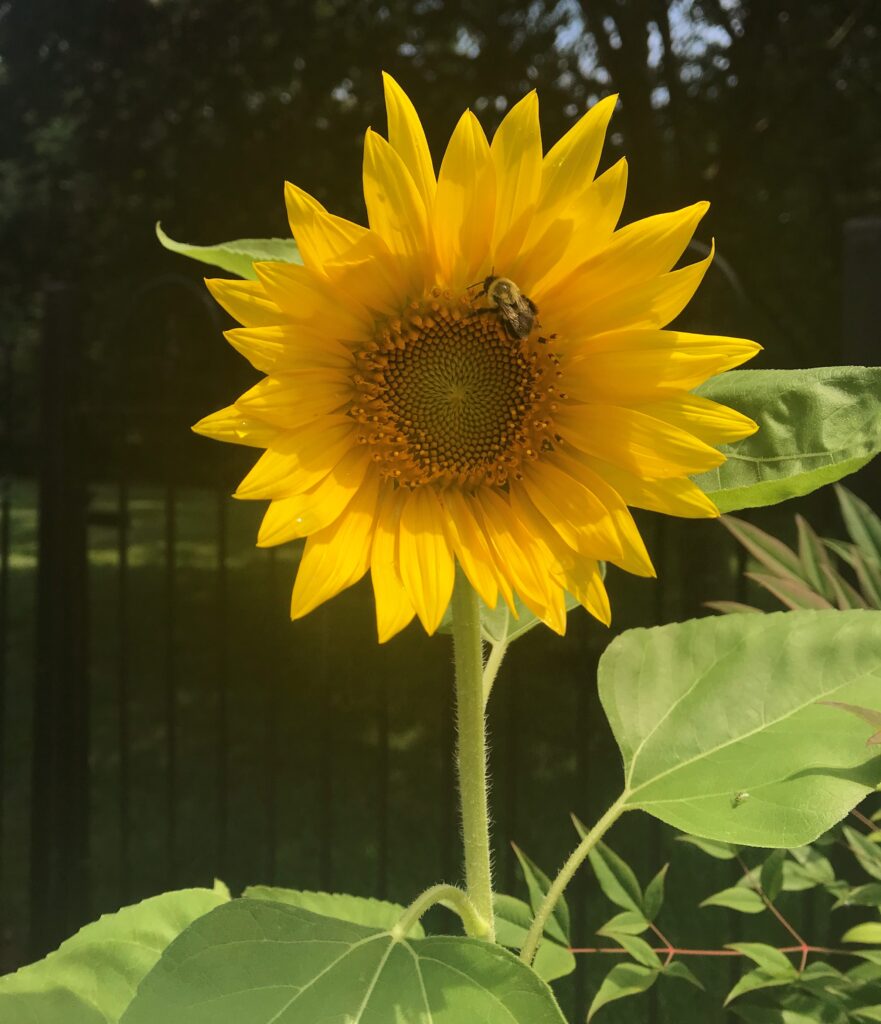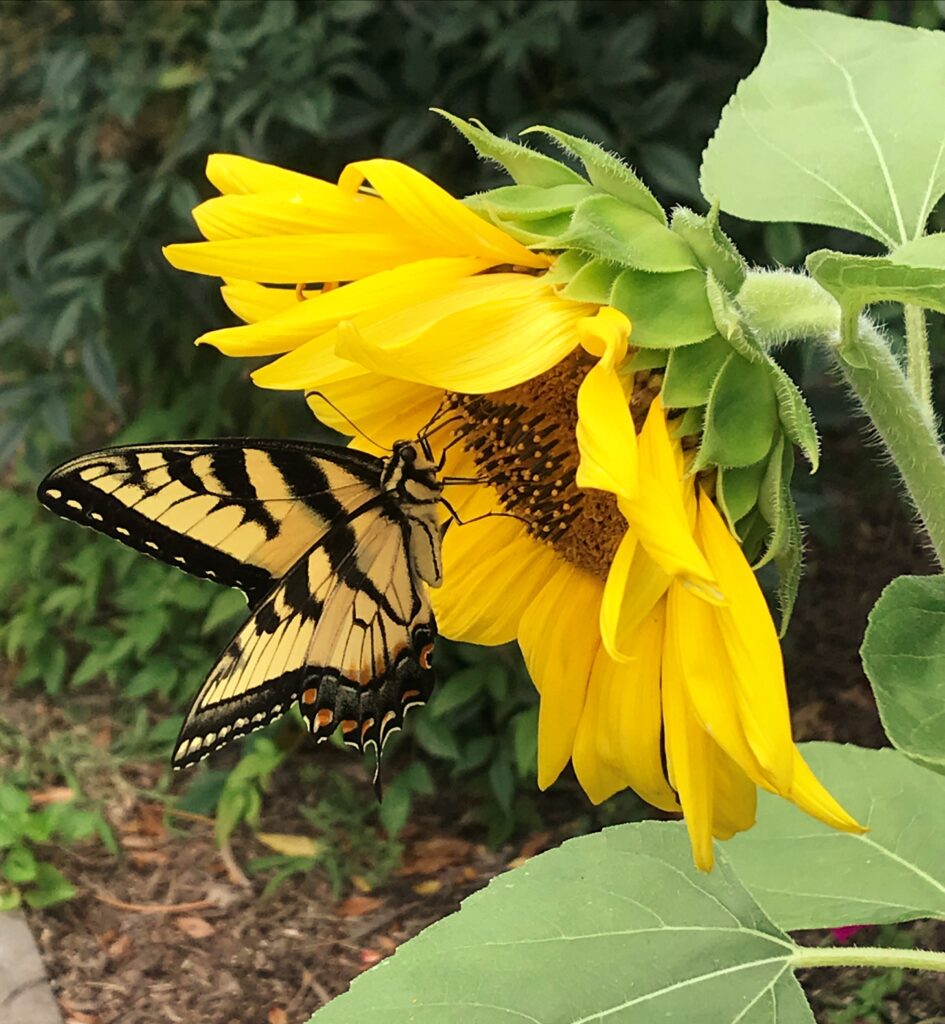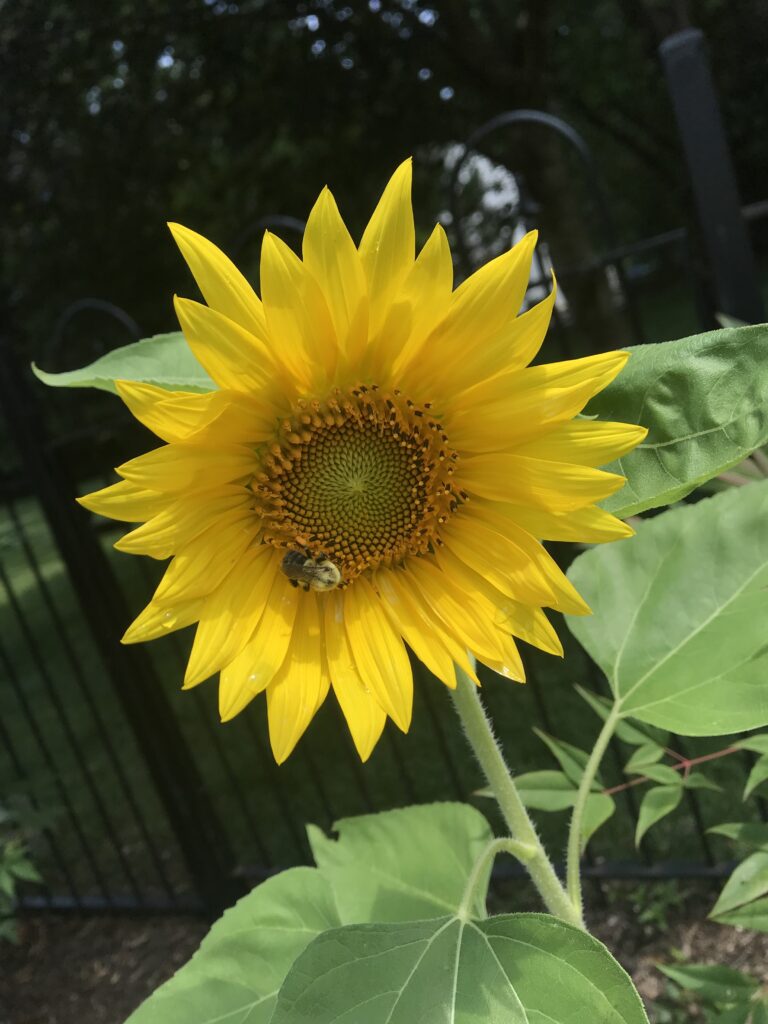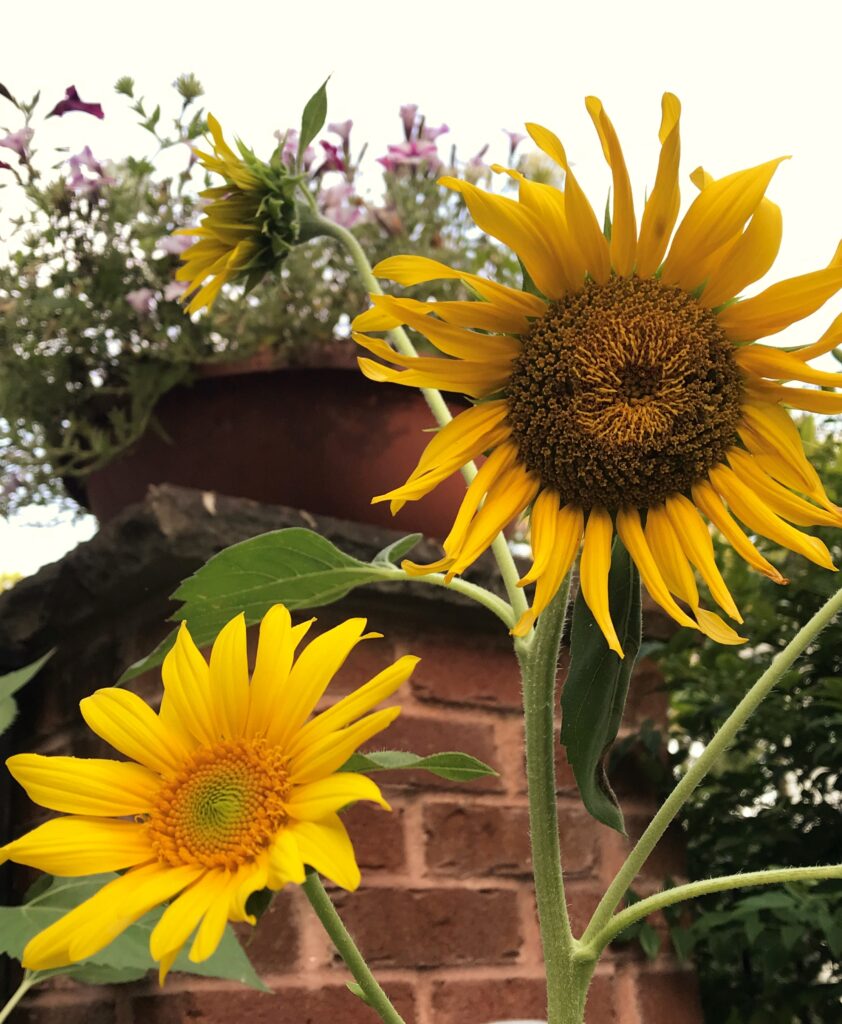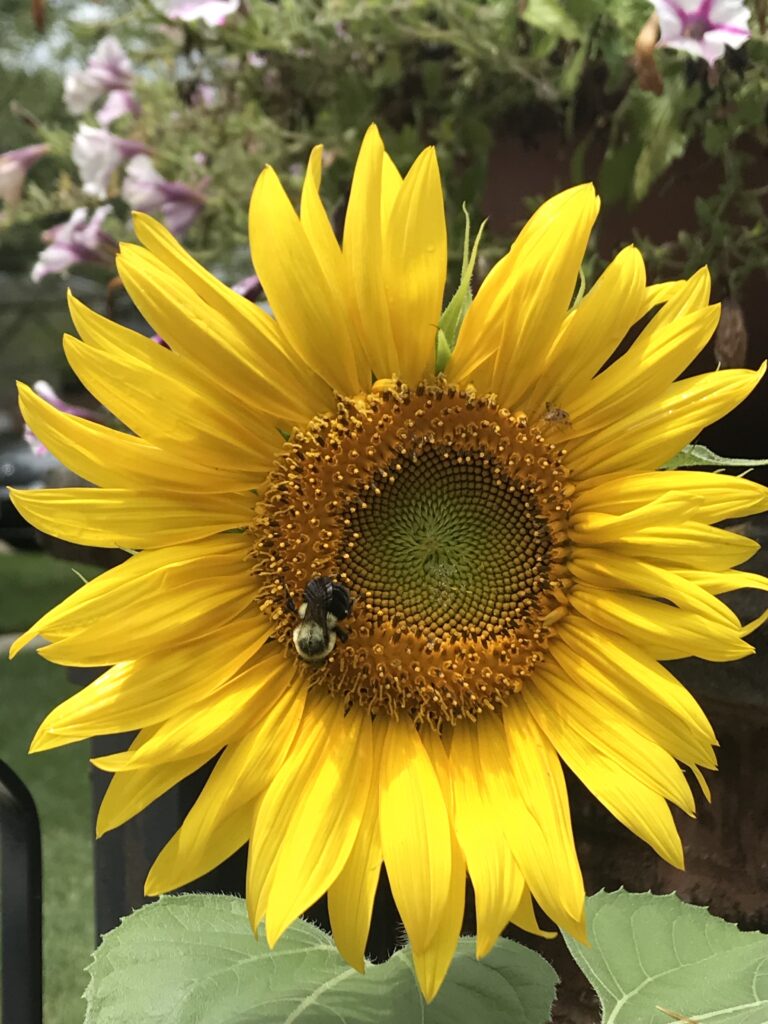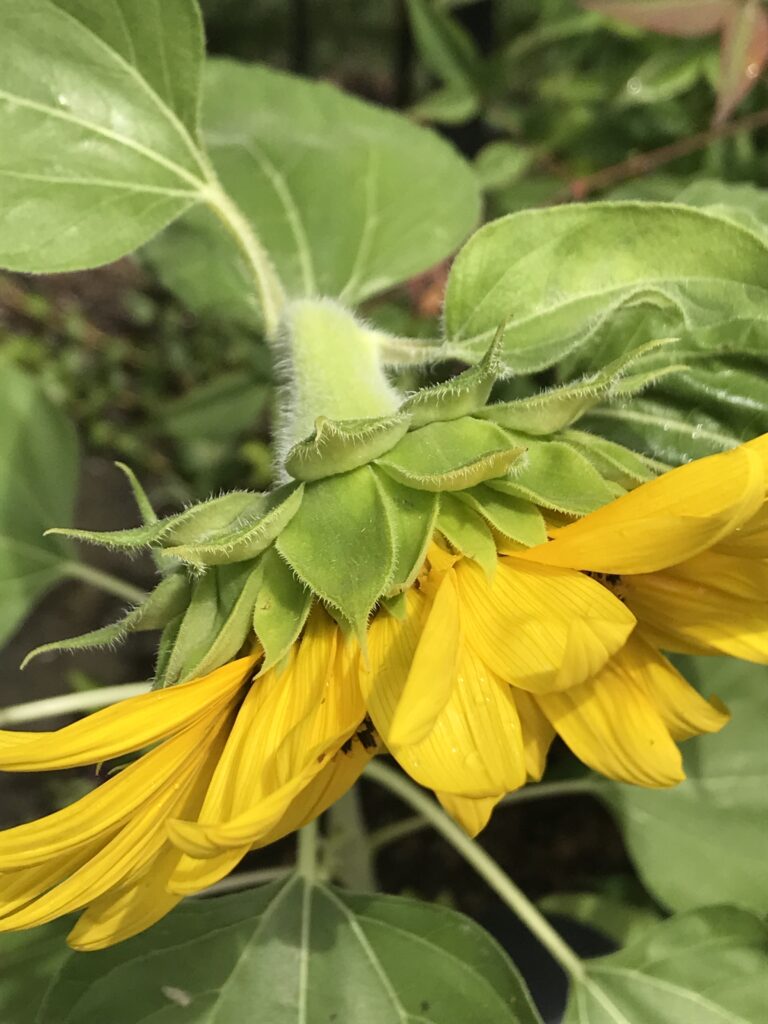If I had no other demands on my time, I could spend an hour or so every day weeding the mulched beds in our back yard around the roses and nandina. Removing the countless maple seedlings alone would keep me occupied. A few years ago, I began noticing some small green shoots that I hadn’t seen before. At first I uprooted them. When one escaped my eye and quickly threw forth lush, fuzzy green leaves, I let it grow. Before long, an interesting bud had formed.
Cradled snugly in the center of a group of emphatically veined leaves, it looked like a small, spiky star.
The bud grew larger, a beautiful thing in itself. Covered by bristly, sharply pointed mini-leaves, it resembled a small artichoke.
Soon, the spiky leaves opened to reveal a sphere covered by yellow petals, their ends gently tucked together at the center. And then I realized: this was a sunflower.
Of course. We’ve made our yard into a haven for birds and squirrels, with multiple feeders, water sources and plenty of scattered seed. We often watch as a squirrel takes a single sunflower seed and buries it, using pointy little fingers to pat down the earth, carefully and thoroughly. According to my husband, this behavior is definitive evidence that I’m providing too much seed. Maybe. But maybe the squirrels simply take pleasure in gardening. They’ve planted pumpkins and acorn squash for us in the past, as well as a flourishing pin oak tree.
Over the past several years, the squirrel-planted sunflowers have become more plentiful, and larger. Each day brings new developments. The bright yellow petals unfold in sections, so that the flower calls to mind a child playing peek-a-boo. The stalks grow taller, thicker and stronger, the leaves bigger.
Apparently I had never examined a live sunflower. I worked from photos when I painted a field of sunflowers not long after Russia’s invasion of Ukraine in the late winter of 2022. I hadn’t noticed the distinctive spiral design at the flower’s center. How had I managed to live this long and yet miss such intricate floral majesty? The awesomeness of life’s little miracles continues to amaze me. (And, in a related note–that old Spirograph set I enjoyed as a kid–is it still on the basement shelves among the games? )
I wanted to learn more about these botanical beauties gifted to us by generous squirrel farmers. A sunflower, I know now, is a well-organized community of hundreds of smaller flowers, or florets. What I’ve always thought of as petals are, in fact, individual flowers, or ray florets. Their sunny flamboyance serves to attract pollinators to the many tiny disc florets that compose the center. The disc florets begin opening around the outer periphery, so that the inner spiral is surrounded by a shaggy, deep golden fringe. Each of these florets is a perfect, five-lobed tubular bloom, rather like a lily, sized for a fairy. They will, in time, grow into seeds.
It’s rare to find a sunflower not hosting a pollinator, or two. They’re favorites of these elegant swallow-tail butterflies. In the photo above, I see two friends deep in conversation, as the flower bows its head slightly to greet and accommodate the butterfly.
Carpenter and bumble bees are never far away. They often nestle in and immerse themselves in the luxurious pollen offered by the rounds of disc florets.
Sunflowers are heliotropic: they orient their faces toward the sun. The flowers turn subtly from east to west with the motion of the sun across the sky, and back to the east in the evening to await the coming dawn. Greater sun exposure yields better growth. The sun-following motion occurs in younger flowers. Older ones, heavy-laden with incipient seed, remain east-facing in order to attract more pollinators. In the photo above, the three flowers remind me of medieval and Renaissance paintings depicting the Three Ages of Man. There’s an early bloom, the small child, bursting with pent-up potential. There’s a fully developed blossom, the young adult in her golden, cheerful prime. And then there’s the older flower, an expression of seasoned maturity and a life well-lived. Its large brown seed head teems with successfully pollinated disc florets. Its yellow ray florets may be bedraggled, but that just means they’ve served their purpose.
I’m glad the sunflowers caught my attention and gave me pause. Nature’s everyday masterpieces rarely fail to brighten my day. But that’s not all. When I take the time to look, and to listen, they speak to me of something far greater. Of the marvel of ongoing creation, powered by an all-encompassing presence. A benevolent presence, both immanent and transcendent, defying words and pushing the limits of thought. If I’m quiet, I might sense the whisper of the breath of God that inhabits and flows through everything. Through the sunflower, from squirrel-planted seed, to shoot, to stalk, to flower, and back to seed. Through me. And through you.
We humans could do worse than follow the example of the sunflower. If we seek the light, we’ll have life, and have it more abundantly.

